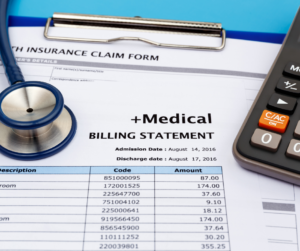
by admin | Nov 17, 2021 | ACA
 On September 30, 2021, the Department of Health and Human Services, the Department of Labor, and the Department of the Treasury (collectively, the Departments), along with the Office of Personnel Management (OPM), released an interim final rule (IFR) under the No Surprises Act (Act) to help protect health care consumers from surprise billing and excessive cost sharing. The IFR primarily explains the Act’s mandatory independent dispute resolution (IDR) process.
On September 30, 2021, the Department of Health and Human Services, the Department of Labor, and the Department of the Treasury (collectively, the Departments), along with the Office of Personnel Management (OPM), released an interim final rule (IFR) under the No Surprises Act (Act) to help protect health care consumers from surprise billing and excessive cost sharing. The IFR primarily explains the Act’s mandatory independent dispute resolution (IDR) process.
Background
A prior interim final rule established that, for emergency services and certain non-emergency services furnished by out-of-network (OON) providers at in-network facilities, patients will pay a cost-sharing rate similar to the in-network rate, which must be calculated based on a state All-Payer Model Agreement, specific state law, or, if neither apply, the qualifying payment amount (QPA). The QPA is generally the plan or carrier’s median contracted rate for the same or similar service in the specific geographic area.
The Act provides that the balance of the bill to be paid by the plan or carrier following patient cost sharing and any initial payment from the plan or carrier is determined between the provider (including air ambulance provider), facility, and the plan or carrier through an open negotiation period. If the parties cannot agree on a payment amount, the Act mandates a federal IDR process.
The IDR process applies only to:
- Balance billing for emergency services; cost-sharing for emergency services must be determined on an in-network basis.
- Patient copayments, co-insurance, or deductibles for emergency services and certain non-emergency services provided at an in-network facility; cannot be higher than if such services were provided by an in-network provider, and any cost-sharing obligation must be based on in-network provider rates.
- OON charges for items or services provided by an OON provider at an in-network facility; prohibited unless notice and consent given in advance. Providers and facilities must provide patients with a plain-language consumer notice explaining that patient consent is required to receive care on an OON basis before that provider can bill the patient more than in-network cost-sharing rates.
Independent Dispute Resolution
Before initiating the IDR process, disputing parties must initiate a 30-day open negotiation period. If open negotiation fails, either party may start the IDR process. If the parties cannot agree on a jointly selected certified IDR entity, or if the jointly selected certified IDR entity has a conflict of interest, the Departments will select a certified IDR entity. The parties will submit their payment offers along with supporting documentation, and the certified IDR entity will issue a binding determination by selecting one party’s offer.
When making a payment determination, certified IDR entities must assume that the QPA is the appropriate OON amount. The certified IDR entity must consider any credible permissible information submitted by a party. For the IDR entity to deviate from the offer closest to the QPA, however, any information submitted must clearly demonstrate that the value of the item or service is materially different from the QPA.
The IDR process will proceed according to the following guidelines:

Expanded External Review
Additionally, the IFR expands the scope of adverse benefit determinations eligible for external review to include determinations that involve whether a plan or issuer is complying with the surprise billing and cost-sharing protections under the No Surprises Act and its implementing regulations. In addition, under these interim final rules, grandfathered plans that are not otherwise subject to external review requirements will be subject to external review requirements for coverage decisions that involve whether a plan or issuer is complying with the surprise billing and cost-sharing protections under the No Surprises Act.
Conclusion
The regulations in the IFR become applicable to group health plans for plan and policy years beginning on or after January 1, 2022. However, the IFR is subject to a public comment period that will close in December 2021. We will continue to monitor this and other related developments under the No Surprises Act and provide ongoing updates as needed.
©2021 United Benefit Advisors, LLC. All rights reserved.

by admin | Nov 9, 2021 | Human Resources
 Theories abound about why workers are leaving their jobs in record numbers in 2021 and thus creating what pundits are calling the Great Resignation. The U.S. Bureau of Labor Statistics reported that 4.3 million Americans quit their jobs in August. These resignations continue to be higher in food service, retail, and education.
Theories abound about why workers are leaving their jobs in record numbers in 2021 and thus creating what pundits are calling the Great Resignation. The U.S. Bureau of Labor Statistics reported that 4.3 million Americans quit their jobs in August. These resignations continue to be higher in food service, retail, and education.
One popular opinion was that people quit unexpectedly and did not look for a new job because of the generous unemployment benefits instituted during the pandemic. The claim was that the job market would return back to normal once those benefits were phased out.
Even though the benefits ended over Labor Day weekend, there has been no significant recovery in employment. Twenty states actually stopped the benefits over the summer and have seen no improvement since then either.
So what’s really behind this trend? According to economists and labor market experts, American workers are soul-searching.The Great Resignation is a philosophical reset of work expectations.
What Workers Really Want
Heather Long, an economics correspondent from the Washington Post, spoke with CBS News recently to discuss her reporting on the Great Resignation.
She said some workers are still concerned about COVID-19, yet that fear may be waning with the increase of vaccinations coupled with decreased infections. Many others simply want to change what they’re doing with their lives.
Lower wage workers are protesting over substandard pay and harsh work conditions, but even mid-level workers who earned higher salaries and better benefits are leaving to open their own businesses or pursue their passions.
Long said that the two biggest priorities for Americans are finding something different or more fulfilling, and working for an employer that values both mental health and work-life balance.
What does this mean for companies?
Offering higher salaries to job candidates may seem like an obvious fix to the problem, but be prepared for the needle to barely move as a result. And it’s clear from the last few months that unemployment benefits weren’t holding workers back either.
“The early evidence certainly suggests that the unemployment benefits were not the main reason holding people back from going and seeking work again,” said Long.
Instead, the Great Resignation has proven to be more about personal values and less about economics.
The Great Reassessment of Work in America
In her interview, Long described what’s happening as a” great reassessment of work in America,” and one of the “biggest shakeups of the labor market since World War II.”
It takes a significant or traumatic event like a pandemic or world war to get people questioning their lives and how work fits into it. So much about the workforce changed in the mid-1900s. Americans were still reeling from The Great Depression only a few years before the war that caused unemployment rates to skyrocket to 25%.
The start of the war actually got things moving again. Factories were established to produce weapons and supplies. More Americans, including women who were previously expected to be stay-at-home wives and mothers, went to work to support the effort. A majority of the workforce became permanently industrialized in that decade.
The American workforce was never the same after World War II, and many experts are pointing to a similar shift today in 2021.
Advice for HR Professionals and Companies
Knowing the root causes of “The Great Resignation” will help HR departments and companies truly solve this labor crisis. Money is important. Everyone needs to pay their bills, and it would be nice to have a few extra dollars to take an extra vacation or buy a more expensive car. But don’t make the mistake of thinking it’s all salary that will bring back workers.
Even if some employees return for a higher salary, it will only keep them engaged in the short-term. When they eventually quit again because of burnout, companies will be back to square one.
Younger workers from the Millennial and Gen-Z generations are leading this trend. Besides the money, they want to feel safe and well-compensated. They want to be treated with decency by employers, who care about their mental health and personal downtime.
by Mckenzie Cassidy
Originally posted on HR Exchange Network

by admin | Nov 2, 2021 | Hot Topics
 Many of us have heard of Alzheimer’s disease but may not know much more than it is a disease that causes memory loss. Experts suggest that more than 6 million Americans, most of them age 65 or older, may have dementia caused by Alzheimer’s. This disease is currently ranked as the sixth leading cause of death in the United States, but recent estimates indicate the disorder may rank third, just behind heart disease and cancer as a cause of death for older people.
Many of us have heard of Alzheimer’s disease but may not know much more than it is a disease that causes memory loss. Experts suggest that more than 6 million Americans, most of them age 65 or older, may have dementia caused by Alzheimer’s. This disease is currently ranked as the sixth leading cause of death in the United States, but recent estimates indicate the disorder may rank third, just behind heart disease and cancer as a cause of death for older people.
Alzheimer’s disease is a progressive brain disorder that slowly destroys memory and thinking skills, and eventually, the ability to carry out the simplest tasks. Changes in the brain may begin a decade or more before symptoms appear. During this very early stage of Alzheimer’s, toxic changes are taking place in the brain. Previously healthy neurons stop functioning, lose connections with other neurons, and die.
Signs and symptoms of Alzheimer’s disease
Memory problems are typically one of the first signs of cognitive impairment related to Alzheimer’s. Alzheimer’s disease progresses in several stages: early, mild (sometimes called mild cognitive impairment), moderate, and severe.
In the Early stage, a person begins to experience memory loss and other cognitive difficulties, though the symptoms appear gradual to the person and their family.
During the Mild Cognitive Impairment(MCI), stage damage occurs in areas of the brain that control language, reasoning, sensory processing, and conscious thought. Conditions such as diabetes, depression, and stroke may increase a person’s risk for MCI.
Some of the signs of MCI include:
- Losing things often
- Forgetting to go to events or appointments
- Having more trouble coming up with words than other people of the same age
MCI can be managed by seeing a doctor or specialist every 6 to 12 months. A doctor can help track any changes in memory and thinking skills over time. People with MCI might also consider participating in clinical trials or studies.
The Moderate stage of Alzheimer’s disease requires more intensive supervision and care becomes necessary.
Symptoms may include:
- Increased memory loss and confusion
- Inability to learn new things
- Difficulty with speech and problems reading, writing and working with numbers
- Difficulty organizing thoughts and logical thinking
- Shorted attention span
- Problems coping with new situations
- Difficulty carrying out multistep tasks, such as getting dressed
- Problems recognizing family and friends
- Hallucinations, delusions, and paranoia
- Impulsive behavior
- Inappropriate outbursts of anger
- Restlessness, agitation, anxiety, wandering in the late afternoon or evening
- Repetitive statements or movement
People with Severe Alzheimer’s cannot communicate and are completely dependent on others for care. The person may also be in the bed most or all the time as the body shuts down.
Symptoms often include:
- Inability to communicate
- Weight loss
- Seizures
- Skin infections
- Difficulty swallowing
- Groaning, moaning, or grunting
- Increased sleeping
- Loss of bowel and bladder control
How is Alzheimer’s disease treated?
Currently, there is no cure for Alzheimer’s, though there are medicines that can help treat the symptoms of the disease. Most medicines work best for people in the early or middle stages of Alzheimer’s. Researchers are exploring other drug therapies and other interventions to delay or prevent the disease as well as treat its symptoms. Some of those include physical activity, diet, cognitive training, and a combination of these.
Alzheimer’s is complex and it is therefore unlikely that any one drug or other intervention will successfully treat it in all people living with the disease. It is important to talk to your doctor if you experience any signs or symptoms of the disease so that appropriate medical tests can be conducted. This will not only give you peace of mind but will help you and your family prepare for the future.
The journey typically lasts for years and for most of that time, people living with Alzheimer’s can still enjoy the same things they always have. Instead of focusing on what is lost, focus on what remains. People still enjoy beauty and feel emotions long after losing the ability to store short-term memories. Recognize each moment as an opportunity to help your loved one experience the joys of life.

by admin | Oct 28, 2021 | ACA
 The Affordable Care Act’s employer shared responsibility provision — often called the employer mandate or “play or pay” — requires large employers to offer health coverage to their full-time employees or face a potential penalty. (Employers with fewer than 50 full-time and full-time-equivalent employees are exempt.) Large employers can avoid the risk of any play or pay penalties by offering all full-time employees at least one group health plan option that meets two standards: It provides minimum value and it is affordable.
The Affordable Care Act’s employer shared responsibility provision — often called the employer mandate or “play or pay” — requires large employers to offer health coverage to their full-time employees or face a potential penalty. (Employers with fewer than 50 full-time and full-time-equivalent employees are exempt.) Large employers can avoid the risk of any play or pay penalties by offering all full-time employees at least one group health plan option that meets two standards: It provides minimum value and it is affordable.
Minimum value means the plan’s share of total allowed costs is at least 60 percent and the plan provides substantial coverage of physician services and inpatient hospital services.
Affordable means the employee’s required contribution (payroll deduction) for self-only coverage, if elected, does not exceed a certain percentage of the employee’s household income. The affordability percentage changes slightly each year based on the law’s indexing rule. For 2021, the percentage is 9.83 percent. For 2022, however, the percentage decreases to 9.61 percent.
Although the change is minor, it means that employers need to consider whether their plan’s employee-only contribution rate will still meet the affordability standard next year.
Determining Affordability
The first step in determining whether a group health plan option is affordable is to define the employee’s “income.” Employers do not know their workers’ total household income, so the play or pay rules offer employers three optional safe harbor methods to define income using information known to the employer. Employers may use any of the safe harbor methods. They also may use different methods for different classes (such as one method for hourly employees and another method for salaried employees), provided that the chosen method is applied uniformly to all employees in the class.
The three IRS safe harbor methods are:
- Federal Poverty Line (FPL)
The FPL method is the easiest of the three methods. Multiply the mainland FPL amount for a single-member household by the affordability percentage, then divide by 12. As long as the self-only contribution rate does not exceed the resulting amount, the plan’s coverage is deemed affordable. For instance:
- 2021: ($12,760 x 9.83%)/12 = $104.52 per month
- 2022 ($12,880 x 9.61%)/12 = $103.15 per month
The FPL chart is updated every year in late January. For 2022 calendar-year health plans, the employer needs to refer to the current FPL amount ($12,880) since the new FPL amount will not be available until after the plan year starts. If the health plan year starts February 1, 2022 or later, however, the employer may refer to the new FPL amount which likely will be a little higher.
2. Rate of Pay
This is the most convenient method to define income when applied to hourly employees. Multiply the employee’s hourly rate of pay times 130 hours per month (regardless of how many hours he or she actually works), then multiply by the affordability percentage. As long as the self-only contribution rate does not exceed the resulting amount, the plan’s coverage is deemed affordable. For instance:
- 2021: ($11* x 130) x 9.83% = $140.57 per month
- 2022: ($11* x 130) x 9.61% = $137.42 per month
* Replace $11 with the hourly employee’s rate of pay.
For salaried employees, the rate of pay method is somewhat complicated so employers generally avoid using this method for non-hourly employees.
3. W-2
The W-2 method requires using current W-2 wages instead of looking back at the prior year. W-2 wages means the amount that will be reported in Box 1 of Form W-2. Pretax contributions, such as § 125 plan contributions and 401(k) or 403(b) plan deferrals, are not included in Box 1, so using the W-2 safe harbor method may understate the employee’s actual income. Coverage will be deemed affordable if, for each month of the plan year, the self-only contribution does not exceed the Box 1 amount multiplied by the affordability percentage.
Summary
Large employers can avoid the risk of potential penalties under the ACA’s play or pay rules by ensuring that they offer full-time employees at least one minimum value plan option that also is affordable. Affordable means the employee’s contribution to elect self-only coverage would not exceed a certain percentage of the employee’s income.
The percentage used to determine affordability changes from year to year is based on the law’s indexing formula. For 2021 plan years, the affordability percentage is 9.83 percent, but it decreases to 9.61 percent for 2022 plan years. Employers and their advisors will want to keep this information in mind as they finalize their group health plan offerings and employee contribution rates for 2022.
By Kathleen A. Berger, CEBS
Originally posted on Mineral

by admin | Oct 19, 2021 | Cybersecurity
 If you are concerned about your cyber security – and you should be – it’s essential to know the biggest threats to you right now. So, what is cyber security anyway? And how can you protect yourself?
If you are concerned about your cyber security – and you should be – it’s essential to know the biggest threats to you right now. So, what is cyber security anyway? And how can you protect yourself?
Cyber security is the practice of defending computers, servers, mobile devices, electronic systems, networks, and data from malicious attacks. Global cyber threat continues to increase at a rapid pace. Most, but not all, cybercrime is committed by hackers who want to make money. As the result of the COVID-19 pandemic, Cybercrime, which includes everything from embezzlement to data hacking and destruction, is up 600%.
Types of Cyber Threats:
Malware, short for “malicious software”, refers to any intrusive software developed by cybercriminals or hackers to steal data and damage computers and computer systems. Malware is often activated when a user clicks on a malicious link or attachment, which leads to installing dangerous software. There are several types of malware:
- Virus: A self-replicating program that attaches itself to clean files and spreads throughout a computer system, infecting files with malicious code.
- Trojans: A type of malware that conceals its true content to fool a user into thinking it’s a harmless file. Cybercriminals trick users into uploading Trojans onto their computer where they can collect data or cause damage.
- Worms: Malicious software that spreads copies of itself from computer to computer within a network. Worms exploit vulnerabilities in your security software to steal sensitive information and corrupt files. A worm is different from a virus, however, because a worm can operate on its own while a virus needs a host computer.
- Spyware: A program that secretly records what a user does, so that cybercriminals can make use of this information. Spyware is often used to steal personal or financial information.
- Ransomware: Malicious software which locks down a user’s files and data with the threat of erasing it unless a ransom is paid.
- Adware: Unwanted software that displays advertisements on your screen. Adware collects personal information from you to serve you with personalized ads. While adware is not always dangerous, it can redirect your browser to unsafe sites and can even contain Trojans and spyware.
- Rootkits: Malicious software that is extremely difficult to spot and also very hard to remove. A rootkit allows someone to maintain control over a computer without the computer owner knowing about it. Once a rootkit has been installed, nothing on your computer is secure.
Where does malware come from?
The most common sources of malware are malicious websites, email attachments, and shared networks.
- Phishing: E-mails that appear to be from a legitimate company asking for sensitive information. Phishing attacks are often used to trick people into handing over personal information or credit card data.
- Shared Networks: A malware infected computer on your shared network can spread malware onto all devices on the network.
- Malicious Websites: Some websites may install malware onto your computer – usually through advertisements on popular sites (malvertising) or malicious links.
How to Prevent Malware – 7 Things You Should Start Doing Now:
- Install Anti-virus Software: Anti-virus software will scan your computer to detect and clean the malware and provide enhanced protection against newly created viruses.
- Regularly Update Software: Keep your software updated to stop attackers gaining access to your computer through vulnerabilities in outdated systems.
- Install a Firewall: A firewall blocks all unauthorized access to or from a private computer network.
- Use Secure Authentication Methods: Use strong passwords with at least 8 characters, including an uppercase letter, a lowercase letter, and a number or symbol. You should also enable multi-factor authentication, such as a security question in addition to a password.
- Don’t Open Emails From Unknown Sources: Hackers often send emails with links that are sure to send malware your way and hack into your important information. It is better to delete the email than to suffer the consequences of opening it.
- Avoid Using Unsecure WiFi Networks in Public Places: On an unsecure network, a cybercriminal can intercept communication between two individuals to steal data.
- Maintain Regular Backups of Your Data: Backups do not secure your network from attacks but they help when you face a malware attack.
Jeh Johnson, former U.S. Secretary of Homeland Security, stated “Cyberattacks of all manner and from multiple sources are going to get worse before they get better. In this realm and at this moment, those on offense have the upper hand. Whether it’s cyber-criminals, hacktivists, or nation-state actors, those on offense are ingenious, tenacious, agile, and getting better all the time. Those on defense struggle to keep up.”
It is imperative that you protect yourself and your family from cybercriminals. With technology increasing, criminals don’t have to rob stores or banks, nor do they have to be outside to commit a crime – they have everything they need on their lap. Their weapons are no longer guns, they attack with a computer mouse and passwords.

 On September 30, 2021, the Department of Health and Human Services, the Department of Labor, and the Department of the Treasury (collectively, the Departments), along with the Office of Personnel Management (OPM), released an interim final rule (IFR) under the No Surprises Act (Act) to help protect health care consumers from surprise billing and excessive cost sharing. The IFR primarily explains the Act’s mandatory independent dispute resolution (IDR) process.
On September 30, 2021, the Department of Health and Human Services, the Department of Labor, and the Department of the Treasury (collectively, the Departments), along with the Office of Personnel Management (OPM), released an interim final rule (IFR) under the No Surprises Act (Act) to help protect health care consumers from surprise billing and excessive cost sharing. The IFR primarily explains the Act’s mandatory independent dispute resolution (IDR) process.




